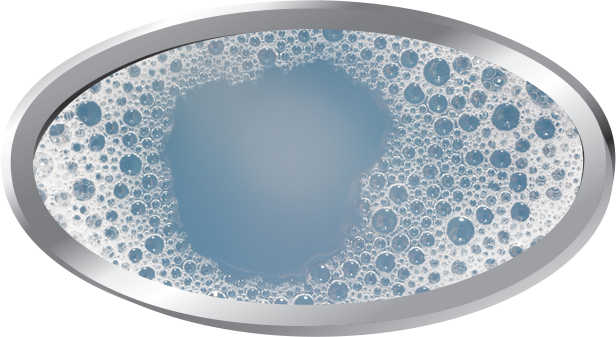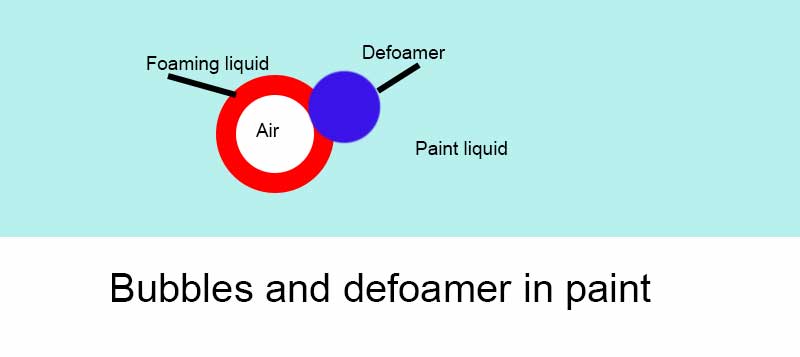How Defoamers Are Used to Prevent Foam in Food and Beverage Production
How Defoamers Are Used to Prevent Foam in Food and Beverage Production
Blog Article
The Function of Defoamers in Enhancing Product Quality and Performance
Defoamers offer as essential additives that mitigate this concern, guaranteeing smoother manufacturing workflows while boosting the aesthetic and useful qualities of the last products. The choice of the proper defoamer can be critical to achieving optimum outcomes, elevating essential concerns regarding solution compatibility and performance metrics that merit additional exploration.
Understanding Defoamers
Recognizing the function of defoamers is essential for keeping item high quality throughout numerous markets. Defoamers are chemical additives made to reduce and protect against the formation of foam in fluid systems, which can detrimentally affect processes such as mixing, loading, and surface area stress. Foaming can cause inefficiencies, item defects, and compromised visual charm, making defoamers an essential element in manufacturing procedures.
In commercial applications, defoamers help to improve product consistency and stability. The effective usage of defoamers not just makes sure smoother manufacturing procedures but likewise contributes to remarkable product efficiency.
Furthermore, the option and formula of a defoamer should straighten with particular application requirements, such as compatibility with other ingredients, effectiveness under varying temperature and pH problems, and potential governing restraints. Eventually, comprehending defoamers' functions and their importance in different formulas is essential for maximizing manufacturing and ensuring the finest quality final result.
Kinds of Defoamers
Defoamers can be categorized right into a number of types based on their make-up and mechanism of action. The key kinds consist of silicone-based, non-silicone organic, and inorganic defoamers.
Silicone-based defoamers are among one of the most effective, primarily as a result of their capability to spread quickly on the fluid surface area and interrupt foam development. Their one-of-a-kind chemical framework permits for superior stability, making them ideal for high-temperature applications and atmospheres with varying pH degrees.
Non-silicone natural defoamers, usually composed of fatty acids or natural oils, are valued for their biodegradability and lower toxicity. These are commonly made use of in food and drink applications where safety and environmental effect are vital.
Inorganic defoamers, which consist of materials like talc or calcium carbonate, act by enhancing the density of the fluid, therefore reducing foam stability. They are often utilized in commercial procedures where compatibility with other materials is not a problem.
Each kind of defoamer has distinct advantages and constraints, allowing for customized solutions depending upon the details lathering concerns run into in different applications. Understanding these distinctions is essential for enhancing performance and achieving wanted item top quality.
Applications Across Industries
Many markets take advantage of defoamers to improve product top quality and functional effectiveness. In the food and beverage industry, defoamers are vital in processes such as brewing and dairy manufacturing to stop foam formation, which can result in inadequacies and product variance. By controlling foam, producers can guarantee far better yield and a much more uniform product.
In the pharmaceutical market, defoamers play a crucial duty in the formula of liquid medications, where extreme foam can hamper blending and precise dosing. Their use helps maintain the stability of the solutions and promotes smoother manufacturing processes.
The paint and finishes industry also counts on defoamers to enhance the efficiency of products throughout application. By decreasing foam, these ingredients make certain a smoother finish and enhance the visual high qualities of the end product.

Benefits of Utilizing Defoamers
While the application of defoamers varies across sectors, their benefits constantly enhance product high quality and procedure performance. One substantial benefit is the decrease of foam development during manufacturing processes, which can or else bring about manufacturing hold-ups and incongruities in product top quality. By reducing foam, defoamers enable a smoother flow of materials, helping with more efficient operations and reducing the possibility of devices malfunctions.
Furthermore, using defoamers can improve the appearance and texture of last items. In markets such as finishings, paints, and food handling, excessive foam can compromise the visual looks and general top quality, while the appropriate defoamer application ensures a consistent coating and preferable qualities. Defoamers can contribute to cost financial savings by decreasing waste throughout manufacturing and maximizing the use of raw products.

Selecting the Right Defoamer
Selecting the right defoamer is crucial for maximizing production procedures and guaranteeing product quality. The selection of defoamer affects not only the performance of foam control but additionally the overall performance attributes of the final item. Aspects to consider include the site here kind of application, the chemistry of the solution, and the ecological conditions under which the product will certainly be made use of.
Different industries might call for specific defoamer kinds, such as silicone-based, organic, or polymeric defoamers. Comprehending the compatibility of the defoamer with the main active ingredients is important to stay clear of damaging responses that can jeopardize product stability. Furthermore, the defoamer's efficiency in numerous temperatures and pH degrees need to be assessed to ensure constant efficiency.
Testing my review here the defoamer in small-scale applications can offer useful insights into its efficiency and viability. Factor to consider of regulatory conformity, specifically in food, pharmaceuticals, and cosmetics, is vital in choosing a defoamer. Eventually, a detailed evaluation of these variables will certainly bring about the choice of a defoamer that not only controls foam successfully but additionally boosts the high quality and performance of the final item.
Final Thought

To conclude, defoamers are essential ingredients that considerably boost item high quality and efficiency across various industries. By properly reducing foam development, these agents not only improve operational effectiveness however also add to the useful and aesthetic integrity of products. The calculated option and application of defoamers bring about set you back savings, maximized source use, and raised customer complete satisfaction. Generally, the relevance of defoamers in commercial processes can not be overemphasized, as they play a crucial function in attaining top quality and consistent results.
Frothing can lead to ineffectiveness, item defects, and endangered aesthetic appeal, making defoamers a vital part in manufacturing procedures.

Report this page